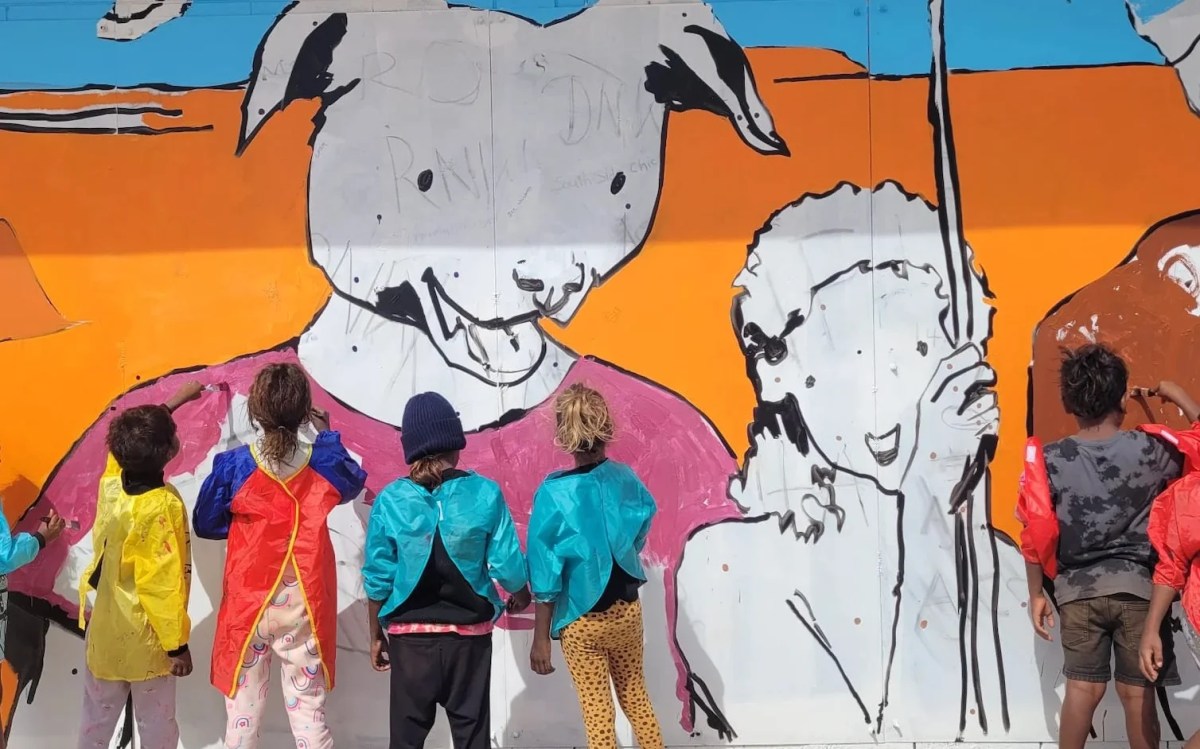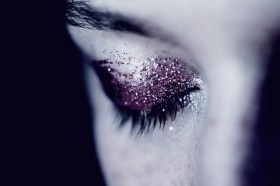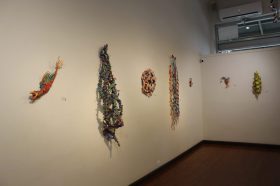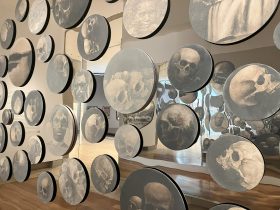Ngurrju Mani-njaku Ngurra – Making Yuendumu Beautiful is a public mural project funded and envisioned by the Yuendumu Granites Mine Affected Area Aboriginal Corporation (GMAAAC) Committee in 2022, and delivered by Red Hot Arts in April this year. Created after an extensive period of close consultation with the Project Steering Committee and the remote First Nations community, the vibrant murals battle against damaging media rhetoric to signal optimism, resilience and strength.
‘This project is about making young people proud of their community and inspire them to feel strong,’ says Belinda Napaljarri Wayne, Project Steering Committee and GMAAAC committee member.
Yuendumu is a Northern Territory town north-west of Alice Springs. One of the largest remote First Nations communities in Central Australia, it includes a thriving population of local artists.
Red Hot Arts Producer, Mel Drew, was assigned to the project and tells ArtsHub, ‘There’s been a lot of negative media attention over the past few years, which the community were highly aware of and was affecting the kids. They wanted something bright and colourful to share their stories and to help the kids feel proud and connected to where they live.’
Drew says the mural project was embraced by locals from the start. ‘I had people calling me up at times throughout the night excited to share their stories and ideas,’ she says. ‘Everybody understood the importance of it and the capacity it had to bring people together.’
The project involved four murals in different locations across the Police Station, Safe House fences, PAW (Pintubi Anmatjere Warlpiri Media and Communications) and the Community Jam Wall on Big Shop (Mai Wiru), which the whole community was invited to participate in.
‘The Community Jam Wall features a whole lot of different characters representing different parts of the community,’ explains Drew. ‘One of the main features is Princess the Cow, the beloved community cow who’s often seen wandering around, visiting the neighbours and hanging out with her camp dog friends.’
For the Police Station mural, Drew and the Committee engaged in conversation with families of deceased Aboriginal police officers, liaison officers and trackers around how best to honour their loved ones. ‘The mural features the three different roles in the past, present and future.’
One defining indicator of the project’s success for Drew is the fact that even now, three months after the murals were revealed, there’s not been a single graffiti tag on them. ‘That’s pretty rare anywhere in the world, but especially in an area where there are so many cuts to youth program funding.
‘It shows the whole community has a lot of ownership and pride towards the project and people are still driving by just to look at them. I’m hoping this creates a ripple effect and that there is more capacity for projects like this.’
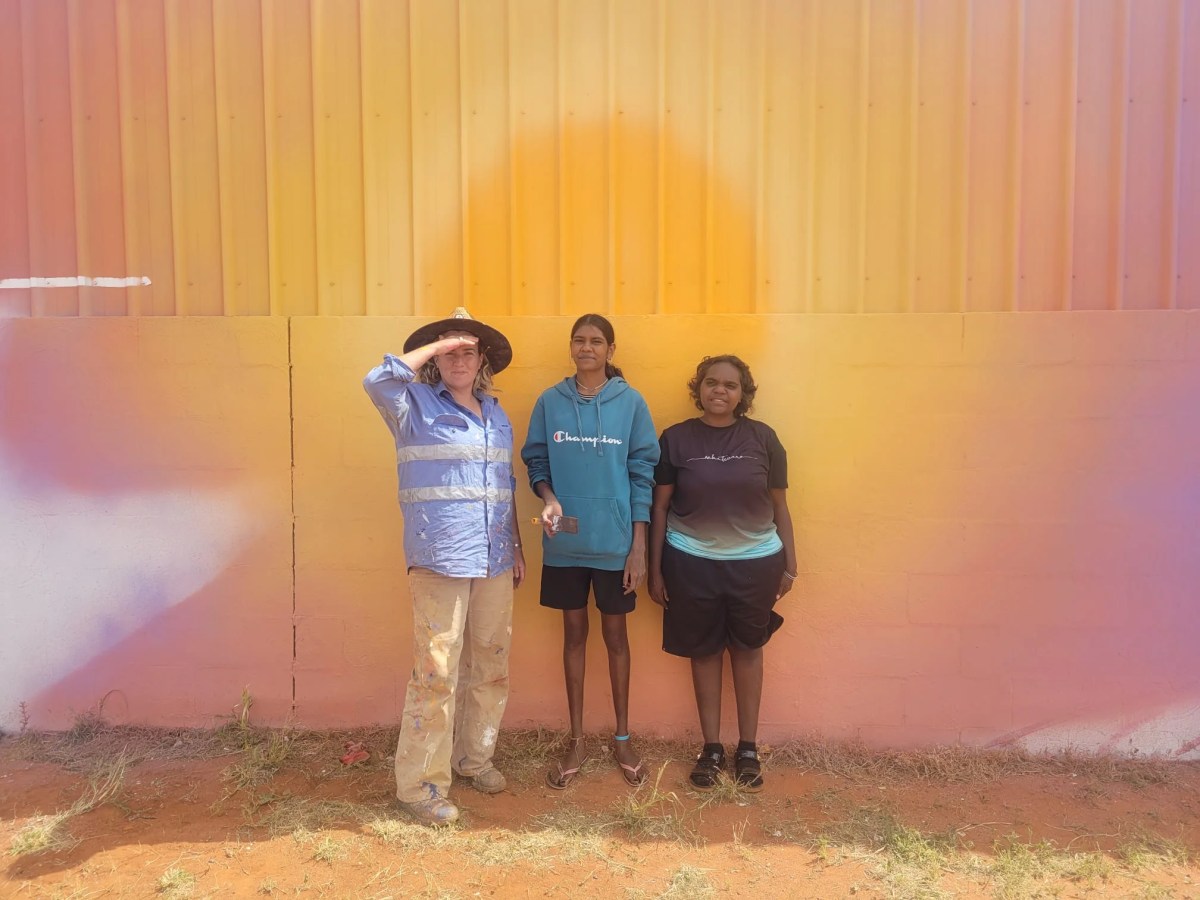
The project was also an opportunity for local and visiting artists to be involved from the mural’s concept design through to execution, designed to create opportunity for sharing of skills, culture and knowledge. Red Hot Arts brought Brontë Naylor, JESWRI and Kaff-eine to Yuendumu to collaborate with Warlpiri artists, Cherylyn Napangardi Granites, Selina Nakamarra Hunter, Mahalia Nampijinpa Hargraves, Jason Japaljarri Woods and Robin Quinsten Jampijinpa Brown. Some of these connections are already spurring on new collaborations between the artists in other areas.
Drew continues, ‘Yuendumu is a vibrant and diverse community with people from many different backgrounds who bring different skills, creative styles, visions and ideas. The generosity of everyone with their time, stories and suggestions meant that the project had a lot to bring together.’
Bringing those disparate elements together with a flexible approach, as Red Hot Arts has done, was key to the project’s success.
Ahead of the murals’ launch event on 23 April, Samantha Napaljarri Watson, a member of the Project Steering Committee, said, ‘Unity is strength. When there is teamwork and collaboration, wonderful things can be achieved. This is our future, our Yapa’s dream, making it real.’
The murals are on public display, paying witness to the ever-growing collection of local stories and memories.
